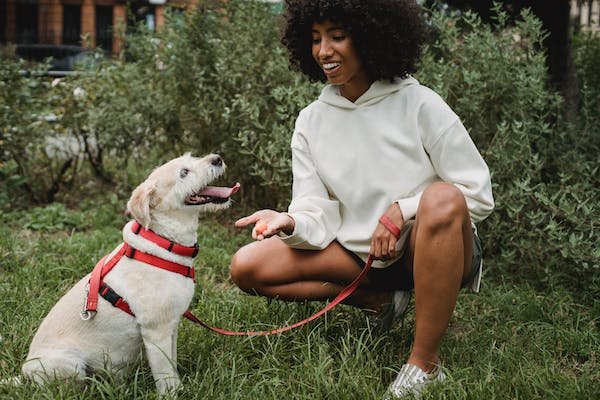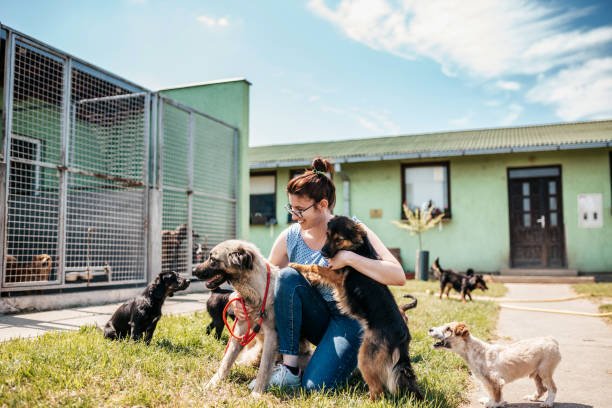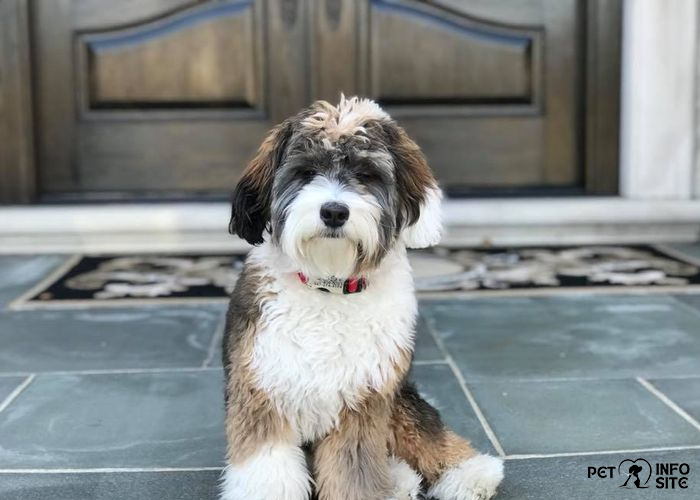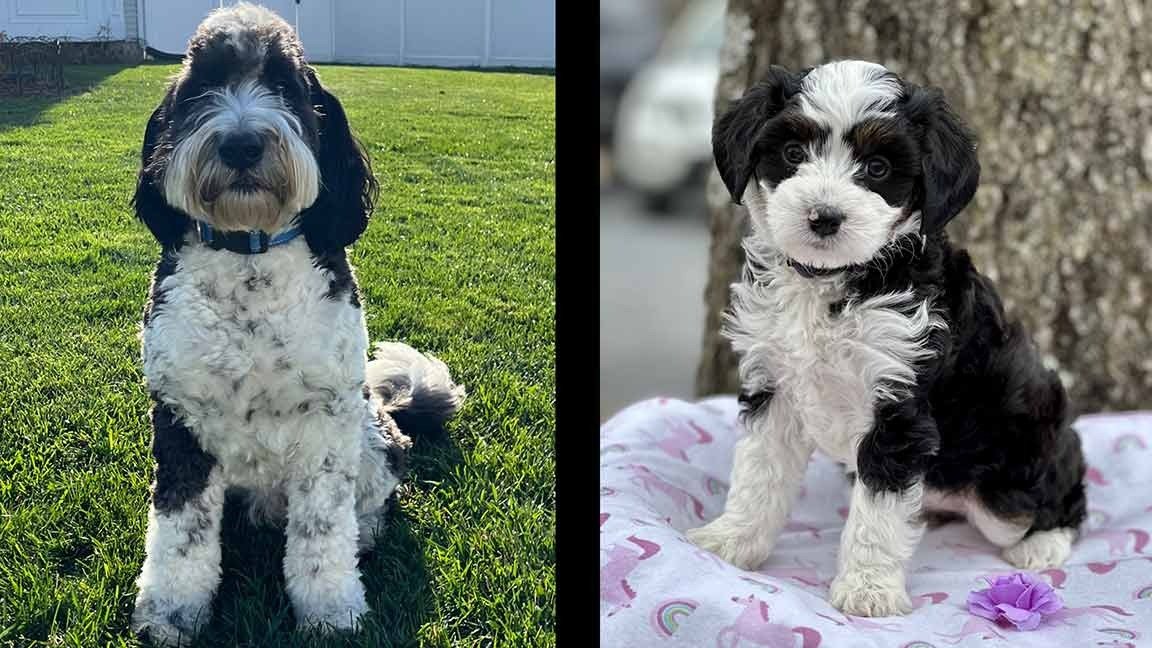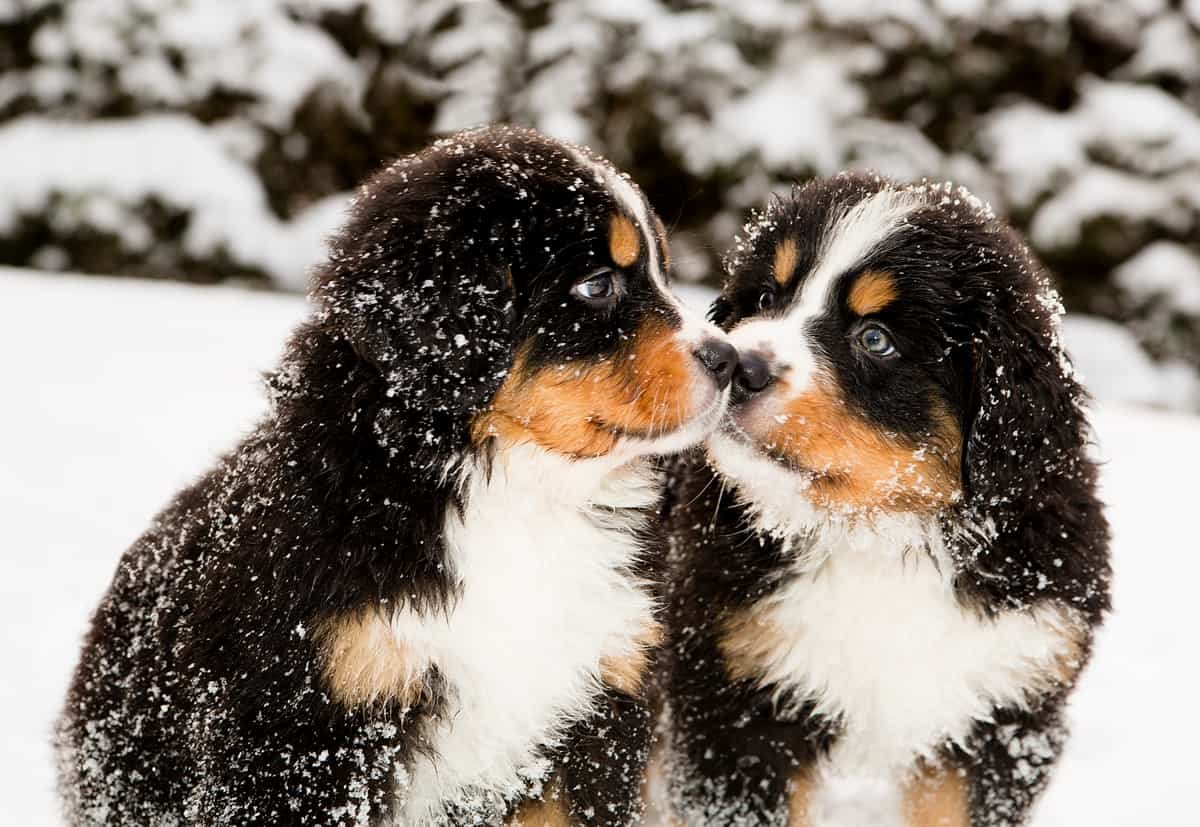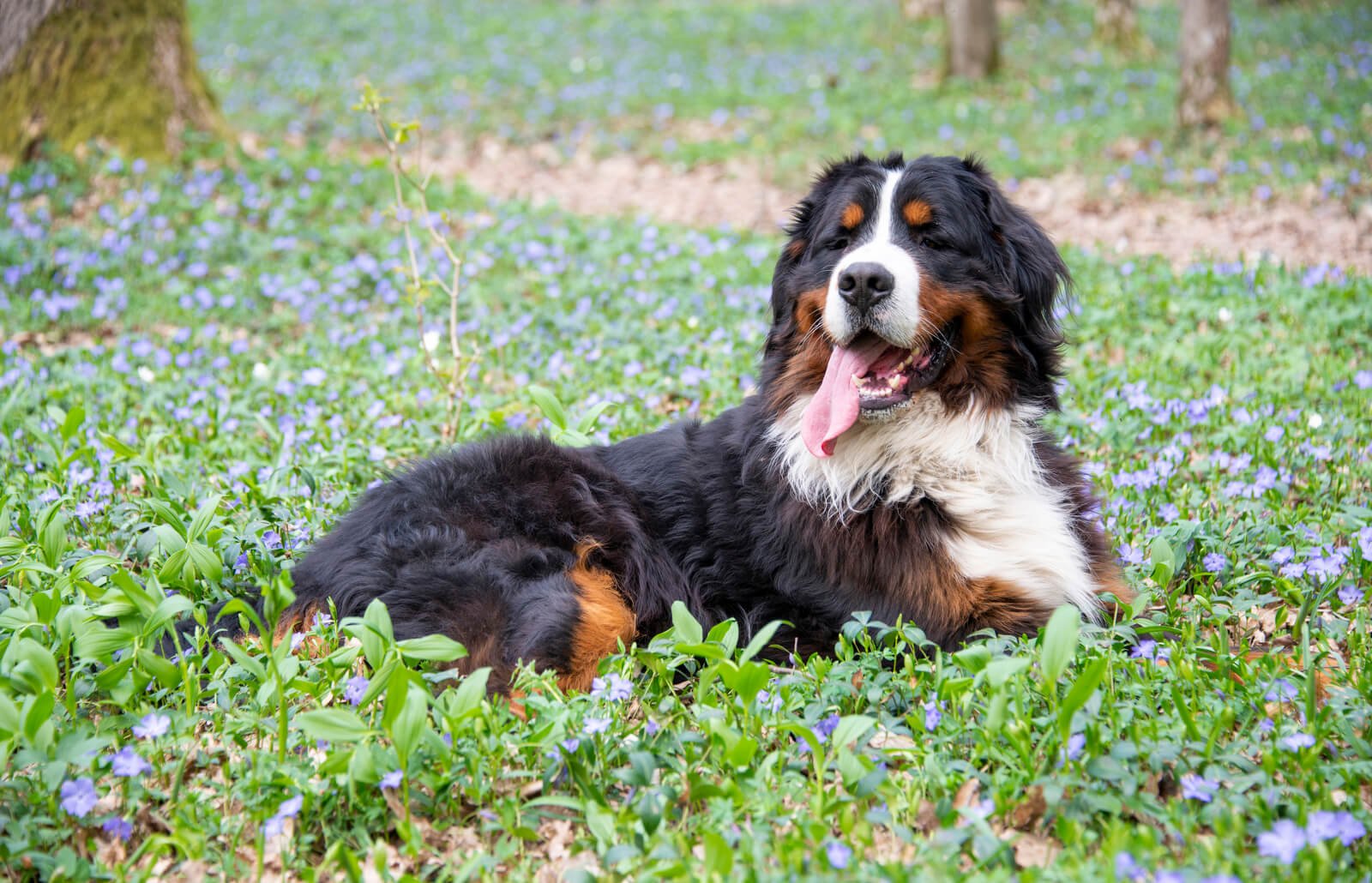The Essential Functions of Best Dog for Tracking
The importance of best dog for tracking in backup response and security. Missions cannot be underlined in a world where each second is vital. These amazing dogs have an amazing talent: they have a sense of flavor that is far better than human minds.
Using this natural talent, tracking dogs is important in helping. To find people who have gone missing, find dishonest drugs, and catch hackers. However, their efforts go outside simple finding; they are loyal friends who work nonstop with their leaders to guarantee the security and welfare of people.
This piece takes us on a visit to the world of tracking dogs, examining their vital roles and amazing powers. We learn about the complex nature of their job and the important effect their work has on the daily. Affairs of many people, from their demanding training programs to their missions in real-life situations.
Qualities of Best Dog for Tracking
Smelling Skills: The Secret to Monitoring Achievement
With senses far greater than human capacity, best dog for tracking are amazing feats of smell. Their noses are tools of precision, able to pick up on minute fragrance particles in an infinite number of scents.
Dogs’ nasal canals have a complex network of smell receptors, and they also have specific smell organs like turbinates and the epithelium of smell. That helps them perceive scents more strongly.
Because their smell bulbs are bigger and more mature than those of humans, dogs can absorb and judge smell. Knowledge with an amazing level of precision.
Because of their keen sense of smell, tracking dogs can follow chemical trails over great distances. Even in difficult-to-find areas where other detection techniques would not be successful.
For years, several breeds have undergone selective breeding to improve their scent-tracking skills. Recognized for their unmatched tracking abilities, bloodhounds with distinctive drooping ears and highly wrinkled skin.
Their wrinkled skin helps trap smell molecules, enabling them. To keep fragrance trails for lengthy periods. While their large, pendulous ears serve to rake signal particles toward their nostrils.
Beagles are excellent at following small animals through thick. Underbrush and difficult terrain because of their acute noses and endless stamina.
They are skilled at avoiding barriers because of their small stature quick movements, and unwavering. Dedication keeps them focused on the scent path until the prey is located.
Physical Characteristics to Monitor Assignments
Apart from their remarkable sense of smell, best dog for tracking have some physical characteristics. That helps them perform better in tracking tasks. Because tracking often requires going over difficult terrain, thick flora, and urban surroundings, speed is crucial.
Dogs with quick movements and flexible joints can gracefully and precisely pass over objects without losing their pace.
Another important consideration is endurance, as tracking operations. May last for hours or even days and need the dogs to go great distances without stopping.
Strong heart capabilities and muscular endurance allow dogs to track. For extended periods, keep them productive until the goal is achieved.
In addition to endurance, durability refers to the dog’s capacity to run at a steady rate over an extended period. Dogs with high energy levels can track for extended periods without weakening or losing concentration, even in challenging environments.
These physical characteristics are embodied by breeds like Belgian Malinois and German Shepherds. Who has muscular builds, limitless energy, and steadfast resolve?
They are excellent assets in following activities because of their agility, endurance, and stamina. This enables them to perform well in a range of situations, including law enforcement, animal conservation, and search and rescue missions.
Breeds renowned Best Dog for Tracking skills
Dogs used for tracking must have excellent senses of smell in addition to their physical ability. To go over different types of surfaces and stay focused on a smell trail. For years, several breeds to excelled in locating activities; each type has its special capabilities.

Bloodhounds: The Experts in Fragrance Monitoring
Prolific in their tracking, bloodhounds call for their unmatched sense of smell and unmatched perseverance in seeking scent traces. Bloodhounds are identified due to their drooping ears, deep lines, and wide, expressive eyes, which belie their exceptional tracking ability.
Their rough skin helps trap smell molecules, letting them keep scent trails. For lengthy periods, their large, pendulous earlobes serve. As brushes for scent molecules towards their very sensitive nostrils. Bloodhounds are important tools in criminal cases. Rescue attempts, and remote tracking projects because they can detect odors that are several weeks or days old.
German Shepherds: Flexible and Trustworthy Leaders
German Shepherds called for their brains and adaptability, which make them excellent tracking dogs in a range of situations. Shepherds are particularly good at tracking activities that call for agility. Attention, and accuracy because of their sleek, powerful bodies and sharp minds.
They are the perfect fit for jobs in policing, rescue efforts, and detection because of their nature. Discipline and history of devotion to their humans. Because of their dedication. To duty and innate tracking sense, German Shepherds are equally adept in rural as well as urban settings.
Beagles: Tiny yet Effective Trackers
When it comes to tracking ability, Beagles are powerful even in small stature. Beagles have an endless supply of energy and sharp senses. Which makes them excellent at following small animals across challenging ground and thick jungles.
They are agile and adaptable, making it easy for them. To go around barriers because of their small stature and quick movements. Beagles are great assets in shooting. Rescue missions, and detecting work because of their strong interest and unwavering will to follow scent traces.
Belgian Malinois: The quick and focused is a Best Dog for Tracking
The quickness, intelligence, and firm determination of Belgian Malinois are well-known. These qualities make them excellent tracker dogs in a range of situations. The elegant, powerful physique and watchful, focused eyes of Belgian Malinois. Give them a taking-over attitude that gives their humans respect.
They are excellent prospects for security forces, army, and rescue teams since they have a strong sense of duty. Because of their natural fitness and work values, Belgian Malinois are excellent. In tracking duties that call for speed, agility, and accuracy.
Techniques for Training Dogs to Track
Specialized methods concentrate on improving smell skills and teaching tracking dogs to successfully follow fragrance trails for tracking dog lessons. Creating a strong base and guaranteeing success in tracking job needs. A mix of scent learning and certain tracking orders and approaches.
Scent Training: Establishing a Strong Base
The mainstay of teaching tracking dogs for the job is scent awareness. The main goal of this training is to improve the dog’s capacity to identify and follow smell traces. The first step in smell instruction is exposing the dog. To a variety of smells and training them to distinguish between them.
Using sense articles clothes or items with particular scents to acquaint the dog with a specific fragrance. A popular technique in nose training. Then, as the dog becomes better at finding. These chemical objects, the level of difficulty and details of the hunts increase.
When the dog finds offensive objects, it rewards with praise, rewards, or play a practice known as behavior modification. Training sessions that are regular and repeated aid in confirming the dog’s. Comprehension of smell tracking and building self-assurance in them.
Tracking dogs over time acquire the ability to link certain smells to the desired habit of following chemical trails. Which paves the way for more difficult tracking assignments.
Monitoring Instructions and Methods
Tracking dogs need to learn certain instructions and methods in addition to smell training to successfully explore smell paths. These signals and methods assist in keeping the dog focused and moving forward. Avoiding barriers during tracking missions, and guiding the dog along a perfume trail.
Typical tracking instructions consist of:
- “Search”: Gets the dog started tracking by encouraging it to start detecting and following the track.
- “Track” instructs the dog to ignore delays or diversions and focus on following the smell track.
- “Stay on track,” tells the dog not to stray from the smell path by keeping their attention focused on it.
- “Find it”: This command motivates the dog to strongly look for and discover the wanted smell. Particularly in circumstances when the chemical trail may be thin or difficult to notice.
Educating a dog to trace scent routes efficiently requires teaching them to utilize their senses of smell, vision, and auditory. Dogs learn how to trace and sniff trails in an organized manner. Utilizing methods like ground-smelling, air-perfumed, and cross-tracking. To go around different kinds of geography and environmental circumstances.
Dogs may develop their tracking abilities and become ready for the demands of the real world. Following missions with regular education, support, and practice. Tracking dogs may be very useful tools in security forces. Conservation, and search and rescue missions if they have the right training and direction.
A Tracking Dog’s Worth Investing
The process of choosing the best tracking dog requires a thorough evaluation of several variables to guarantee suitability. For the intended use and surroundings. When evaluating whether a dog is suitable for tracking tasks. Personality analysis and lifestyle. Suitability is an important factor to take into account.
Flexibility of Lifestyle: Fitting the Dog for the Task
The lifestyle and needs of the planned tracking work into account while selecting a tracking dog. Different tracking tasks need different amounts of energy, dedication, and specific knowledge and abilities from the person and the hound.
For example, a breed with an image of friendliness and low energy levels. Would be more appropriate if you’re starting informal tracking for fun. On the other hand. Hard monitoring trials or demanding search and rescue missions are needed. Breeds that are high on power, very durable, and highly focused.
Selecting the right tracking dog for you requires careful consideration of your requirements, including your lifestyle and duties. Consideration is made for things like the amount of time. To handle and exercise. the degree of activity in the home, and personal. Preferences for breed size, skin type, and grooming needs.
Think about the setting where the tracking operations will be conducted most of the time. While tracking in the bush needs a dog with excellent scenting skills and tolerance. Due to rough ground and variable weather conditions, hunting in urban areas may be needed. A dog who is at ease traversing busy streets and loud environs.
Evaluating Motivation and Temperament
When choosing a tracking dog, attitude and drive are essential characteristics to consider. A dog’s temperament includes all of its personality qualities, such as friendliness, self-assurance, and situational flexibility.
A tracking dog must be strong, focused, and composed no matter what kind of issues are around. Dogs who exhibit extreme fear, anger, or anxiety may find. It is difficult to track well and is a good choice.
The word “drive” describes a dog’s natural desire and will to engage in tracking activities. Seek for dogs who are excited about working scents, have a high prey drive, and are persistent. Due to their great reactivity to reward-based training techniques, dogs with high food or toy drives may be considered useful.
Examine the dog’s temperament and fitness for tracking by completing tests and exams. You may find a dog with the ideal temperament and energy for tracking activities. Working with respectable breeders or rescue groups.
Through careful consideration of temperament, drive, and lifestyle harmony, you may choose a tracking dog. That will meet your requirements and be an excellent partner in a variety of tracking activities.
Certification and Contests for Best Dog for Tracking
Challenges and tracking dog certification are essential for evaluating and exhibiting tracking dogs’ talents. These occasions provide humans and their dog companions important chances. To justify their training efforts and show off their smell-tracking prowess.
The Value of Tracking Dog Certification
The official validation of a tracking dog’s skills and training is provided by certification. It confirms that the dog satisfies certain requirements and standards set down by regulating or certified offices.
For tracking dogs participating in professional activities like rescue operations, security forces, and conservation initiatives. Certification is essential since it guarantees the dogs have the abilities needed to carry out their tasks efficiently and dependably.
Because certification shows that a dog has completed extensive instruction and testing to achieve set performance criteria. It also fosters trust in the user and the society at large.
This guarantee is especially crucial in high-stakes situations like missing person detection or drug detection. When the tracking dog’s dependability might have a big impact on the result.
Furthermore, tracking dogs would need to be certified. To engage in specific tasks or access particular regions for training or operations. It is a requirement for participation in official. Tracking trials and events, giving operators the chance to demonstrate their dog’s skills to a larger audience.
Taking Part in Tournaments and Trials for Best Dog for Tracking
Operators and their tracking dogs may evaluate their abilities in faked, controlled environments by participating in tracking trials and races. Dogs compete in these events by tracing scent paths that are marked by judges or managers. Points are awarded for quickness, precision, and loyalty.
For managers and their dogs, competing in tracking competitions and events offers several advantages. It gives handlers the chance to improve their handling abilities. Hone their training methods, and get input from knowledgeable judges and other opponents.
Competitions provide tracking dogs with physical and mental challenges as well as the opportunity. To refine their tracking skills in a helpful and demanding setting.
Events to succeed tracking are available in a range of forms and skill levels. To accommodate handlers and dogs with different degrees of expertise.
Tracking teams can enter and succeed at any level of their training path, from basic trials suited for novices. To advanced events testing the abilities of seasoned pros.
Taking part in tracking events and competitions promotes bonds of friendship among tracking aficionados in addition. To their own development and skill improvement.
In addition to celebrating their canine friends’ results, handlers have the opportunity to network with like-minded people.
All things considered, tracking dog contests and qualifications are useful tools for evaluating. Enhancing, and recognizing the talents of tracking puppies and their trainers.
Tracking teams may exhibit their passion, knowledge, and ability in scent-tracking. Industry by being certified and taking part in competitions.
Benefits of Best Dog for Tracking in Daily Life
In several real-world situations, tracking dogs’ amazing smell senses and specific training may have a significant impact on the result.
Tracking dogs are mostly used in security and detecting work as well as search and rescue missions.
Activities for rescue and search purposes
Tracking dogs are essential to search and rescue (SAR) efforts because they help locate individuals. Who goes missing in a variety of situations, such as large cities, remote locations, and emergencies.
Dogs’ acute sense of smell enables them to pick up on human perfume even in difficult. Environments like bad weather or hard geography.
Tracking is often used by rescue efforts to trace scent tracks left by missing or wounded people, greatly increasing. The efficacy and speed of search operations.
Tracking dogs are taught to assist human managers and other emergency rescue workers by using their sense of smell. To find people who could be injured, missing, or stuck.
The dogs are an essential part of rescue squads. Whether they are looking for hikers who have been lost in isolated outdoor locations. Finding survivors after emergencies, or helping with urban search efforts.
Work in Justice and Security
Tracking dogs to seek and recognize certain smells linked to unlawful conduct, contraband, or evidence in security and detection operations.
These canines are often used in a variety of police duties, such as the detection of drugs. And devices and the arrest of individuals who pose a threat.
Drug tracking dogs are taught to find. The smell of substances like heroin, coke, and marijuana to identify the smell of illegal drugs.
These canines are used in many different contexts, such as airports. Points of entry, and police efforts aimed at criminal drug networks.
In high-risk settings like airports, governments, and public gatherings. Bomb detection canines are trained to identify any signs of explosives and devices.
These canines are taught to detect explosive scents and warn their masters of any possible danger.
Conclusion
In conclusion, it is impossible to overrate the importance of tracking dogs in security, look, and rescue jobs. In times of risk and doubt.
These remarkable animals serve as walls of courage and loyalty thanks to their sharp senses and fixed loyalty.
Their efforts are far more than just being noticed; they are the ideal of bravery, kindness, and patience. Tracking dogs and their owners develop strong relationships over many hours of training, help, and trust between them.
Together, they make their way through the most difficult sites, overcoming failures with firm belief. Tracking dogs is the perfect example of piety and loyalty. Whether they are searching large remote regions for missing people or detecting banned drugs in dangerous positions.
Let’s allow and respect the significant help tracking dogs provide to areas as we consider their helpful duties. Their immovable word and unselfish dedication are outstanding examples of the amazing skills found in the animal realm.
FAQs
Which breeds are often used for tracking canines?
Breeds that are often used for tracking include Bloodhounds, German Shepherds, Beagles, and Belgian Malinois because of their remarkable. Smelling skills and easygoing personalities.
How are canines taught for Best Dog for Tracking?
Chemical training, which includes adjusting tracking dogs. To certain odors and teaches them how to follow smell paths, is a difficult process. Techniques for promoting positive behavior to reward desirable actions.
In rescue and search missions, what are the main duties of Best Dog for Tracking?
Tracking dogs are used in rescue operations to follow smell routes to discover missing people. Even in difficult settings, they can cover huge areas rapidly to locate missing people.

